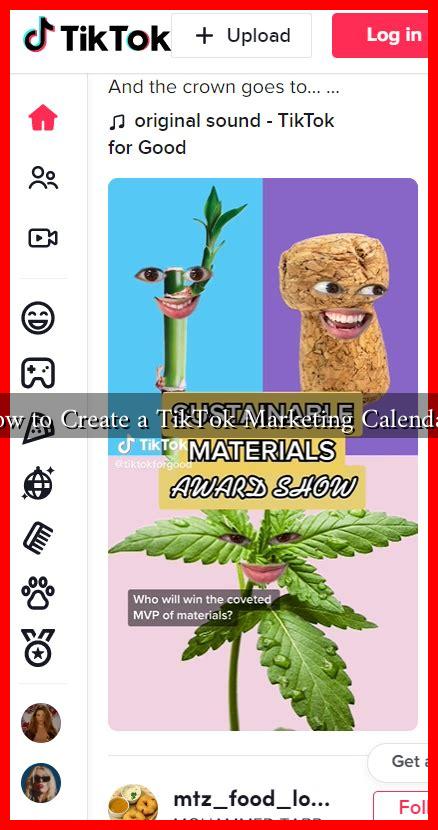-
Table of Contents
- How to Create a TikTok Marketing Calendar
- Understanding the Importance of a Marketing Calendar
- Steps to Create Your TikTok Marketing Calendar
- 1. Define Your Goals
- 2. Research Your Audience
- 3. Identify Key Dates and Events
- 4. Brainstorm Content Ideas
- 5. Create a Posting Schedule
- 6. Monitor and Adjust
- Conclusion
How to Create a TikTok Marketing Calendar
In the fast-paced world of social media, TikTok has emerged as a powerful platform for brands looking to engage with younger audiences. With over 1 billion active users, TikTok offers a unique opportunity for marketers to showcase their creativity and connect with potential customers. However, to maximize your impact on this platform, a well-structured marketing calendar is essential. This article will guide you through the steps to create an effective TikTok marketing calendar that aligns with your brand goals.
Understanding the Importance of a Marketing Calendar
A marketing calendar serves as a roadmap for your content strategy. It helps you plan, organize, and execute your marketing efforts efficiently. Here are some key benefits of having a TikTok marketing calendar:
- Consistency: Regular posting keeps your audience engaged and helps build brand loyalty.
- Strategic Planning: A calendar allows you to align your content with key dates, events, and campaigns.
- Performance Tracking: By scheduling content, you can analyze what works and adjust your strategy accordingly.
Steps to Create Your TikTok Marketing Calendar
1. Define Your Goals
Before diving into content creation, it’s crucial to establish clear marketing goals. Are you looking to increase brand awareness, drive traffic to your website, or boost sales? Your goals will shape the type of content you create and how you measure success.
2. Research Your Audience
Understanding your target audience is vital for creating relevant content. Utilize TikTok’s analytics tools to gather insights about your followers, such as:
- Demographics (age, gender, location)
- Interests and preferences
- Engagement patterns (when they are most active)
For example, if your audience is primarily Gen Z, consider incorporating trending challenges and music into your content.
3. Identify Key Dates and Events
Incorporate important dates into your calendar, such as:
- Holidays (e.g., Christmas, Halloween)
- Industry-specific events (e.g., product launches, trade shows)
- Seasonal trends (e.g., summer sales, back-to-school promotions)
For instance, a fashion brand might plan a series of TikTok videos showcasing summer outfits leading up to the summer solstice.
4. Brainstorm Content Ideas
With your goals and key dates in mind, start brainstorming content ideas. Consider the following formats:
- Challenges: Create or participate in trending challenges to increase visibility.
- Tutorials: Share how-to videos that showcase your products or services.
- Behind-the-Scenes: Give followers a glimpse into your brand’s culture and processes.
For example, the skincare brand @CeraVe successfully used TikTok to share skincare routines and tips, which resonated well with their audience.
5. Create a Posting Schedule
Decide how often you want to post on TikTok. Consistency is key, so aim for a manageable frequency, whether it’s daily, a few times a week, or weekly. Use a calendar tool or spreadsheet to map out your content schedule, including:
- Content type
- Posting date and time
- Relevant hashtags and captions
6. Monitor and Adjust
Once your calendar is in place, it’s essential to monitor the performance of your content. Use TikTok analytics to track metrics such as:
- Views and engagement rates
- Follower growth
- Traffic to your website
Based on this data, adjust your strategy as needed. If certain types of content perform better, consider incorporating more of that into your calendar.
Conclusion
Creating a TikTok marketing calendar is a strategic approach that can significantly enhance your brand’s presence on the platform. By defining your goals, understanding your audience, and planning your content around key dates, you can ensure that your marketing efforts are both effective and engaging. Remember to monitor your performance and be flexible in your approach, adapting your strategy based on what resonates with your audience. With a well-structured calendar, you can harness the full potential of TikTok to drive brand awareness and engagement.
For more insights on social media marketing, check out Hootsuite’s guide on social media marketing strategies.

